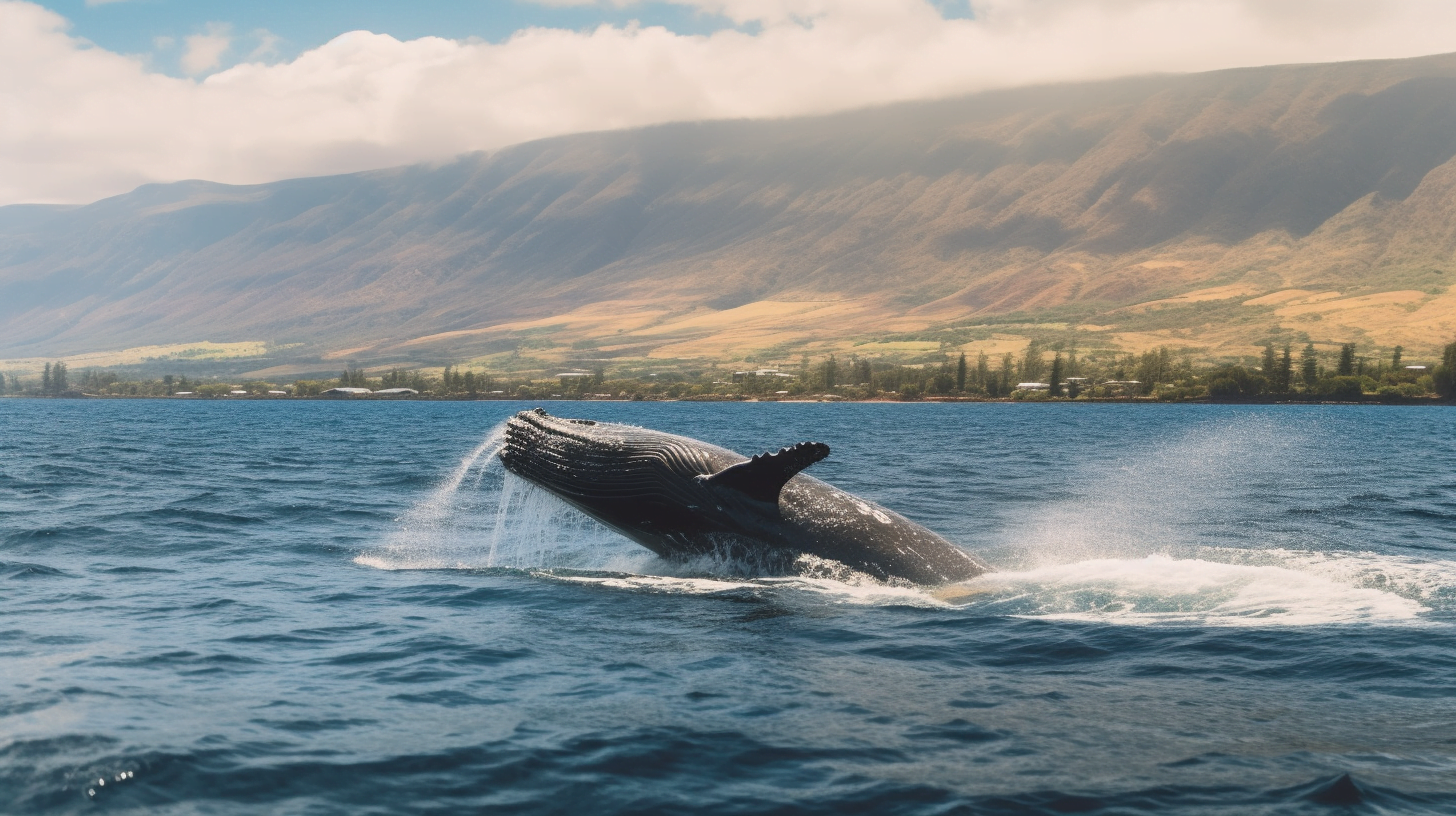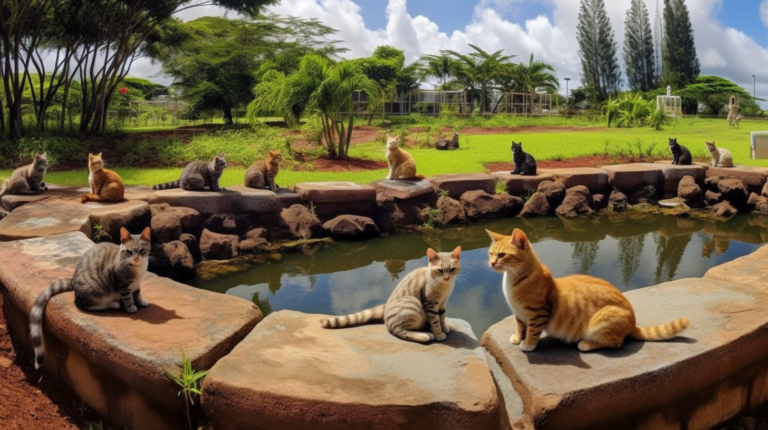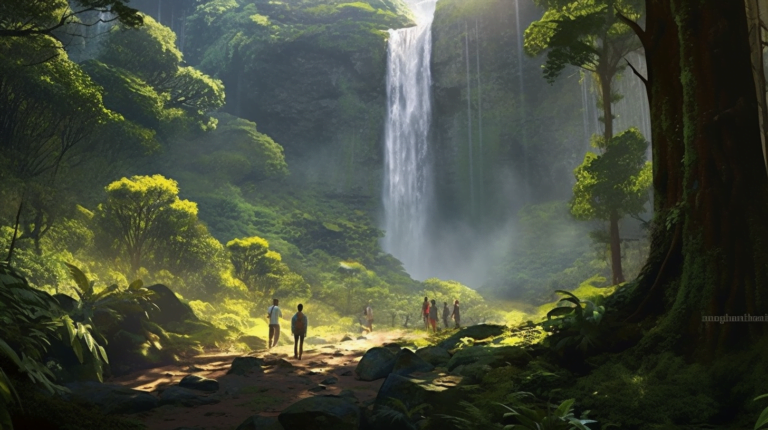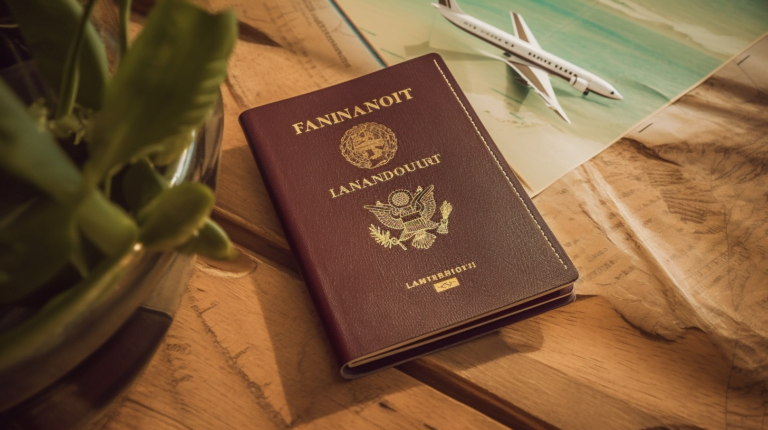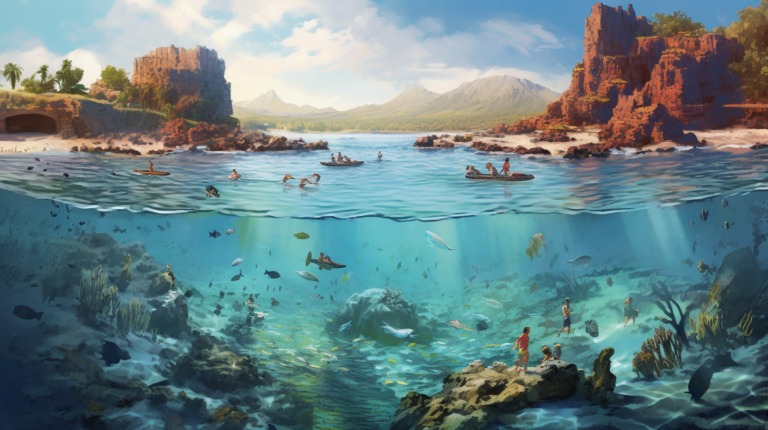🐋 Ultimate Guide to Whale Watching in Lanai: Adventure, Conservation, and More!
If you’re looking for a unique and awe-inspiring experience, whale watching in Lanai is an activity you won’t want to miss. Lanai, a small island in Hawaii, is known for its pristine landscapes, crystal-clear waters, and abundant marine life.
Between December and April, humpback whales migrate to the waters surrounding Lanai, offering a thrilling opportunity to observe these majestic creatures up close.
Choosing the right whale watching tour is crucial to ensure an unforgettable experience. With the help of knowledgeable guides and experienced captains, you’ll be able to witness the beauty and wonder of humpback whales in their natural habitat.
From observing their breaching and tail slapping behaviors to listening to their haunting songs through underwater microphones, a whale watching tour in Lanai is an adventure you won’t soon forget.
Key Takeaways
- Humpback whales migrate to the waters surrounding Lanai between December and April, and the best time to go whale watching is from December to May.
- Safety measures, pricing options, and reviews should be considered when choosing a whale watching tour, and guidelines established by tour operators should be followed to ensure a safe and enjoyable experience for everyone.
- Sustainable tourism and responsible whale watching are crucial for ensuring the protection of humpback whales and generating revenue for conservation efforts and research on marine ecosystems.
- Tips for planning a Lanai adventure include considering budget-friendly accommodations, transportation options, and community involvement, as well as emphasizing the natural beauty and oceanic encounters on the island.
The Best Time to Go Whale Watching in Lanai
Want to know the best time to catch a glimpse of majestic whales while whale watching in Lanai? Let’s find out!
To maximize your chances of seeing these gentle giants, it’s important to know the peak season for whale watching in Lanai. The best time to go is from December to May, when humpback whales migrate to Hawaii’s warm waters to mate, give birth, and nurse their young.
During this time, the waters around Lanai become a playground for these magnificent creatures, providing numerous opportunities to observe them up close. To get the best vantage points for whale watching, head to the southern coast of Lanai, where the whales tend to congregate. Manele Bay and Hulopoe Bay are two popular spots where visitors can witness the whales’ breathtaking displays of breaching, tail slapping, and spyhopping.
When planning your whale watching trip, keep in mind that weather conditions can affect visibility and whale behavior. It’s always a good idea to check the weather forecast and sea conditions before heading out.
Additionally, choosing the right whale watching tour can make all the difference in your experience. Let’s take a look at some important factors to consider when selecting a tour in the next section.
Choosing the Right Whale Watching Tour
Selecting the perfect whale watching tour can be an overwhelming experience, but with a little research, you’ll find the tour that will blow your mind!
When choosing a whale watching tour, be sure to consider the safety measures that are in place. The tour should have experienced guides who are knowledgeable about the behavior of whales and can ensure the safety of both the passengers and the whales. Additionally, the boat should be equipped with safety equipment such as life jackets, flares, and radio communication devices.
Pricing options are also important when choosing a whale watching tour. Some tours may offer discounts for children or large groups, while others may have different packages that offer additional amenities such as snacks or drinks. It’s important to consider the value of the tour, not just the price, as a more expensive tour may offer a better overall experience.
Finally, when choosing a whale watching tour, it’s essential to read reviews and ask for recommendations from friends or family who have gone on similar tours. This will give you an idea of what to expect and help you make an informed decision.
Once you’ve chosen the perfect tour, it’s time to sit back and enjoy the incredible experience of observing these magnificent creatures in their natural habitat. In the next section, we’ll explore what to expect during a whale watching tour.
What to Expect During a Whale Watching Tour
During a whale watching tour, you’ll be amazed by the majesty of these creatures as they breach and play in their natural habitat. Humpback whales are known for their acrobatic displays, which include breaching, tail slapping, and spyhopping.
Breaching is when the whale leaps out of the water, often twisting or turning in mid-air before falling back into the ocean with a tremendous splash. Tail slapping is when the whale slaps its tail on the water’s surface, creating a loud noise that can be heard from a distance. Spyhopping is when the whale pokes its head out of the water to get a better look at its surroundings.
To make the most of your whale watching tour, there are a few tips to keep in mind. First, be patient. While humpback whales are often active and playful, they can also be elusive. Second, bring a pair of binoculars or a camera with a zoom lens to get a closer look at the whales without disturbing them. Third, listen to the naturalist on board who will provide valuable information about the whales’ behavior and biology. Finally, respect the whales’ space and follow all guidelines established by the tour operator to ensure a safe and enjoyable experience for everyone.
As you prepare to learn more about the biology and behavior of humpback whales, it’s important to keep in mind the incredible experience you’ll have during a whale watching tour. By observing these magnificent creatures in their natural habitat, you’ll gain a deeper appreciation for their intelligence, grace, and beauty. So sit back, relax, and get ready to witness one of nature’s most awe-inspiring spectacles.
The Biology and Behavior of Humpback Whales
Get ready to be amazed by the biology and behavior of humpback whales, as they are known for their acrobatic displays and vocalizations that can be heard from miles away. Humpback whales are one of the largest animals on earth, with adults reaching up to 50 feet in length and weighing over 40 tons. These majestic creatures are found in all major oceans, but during the winter months, they migrate to warmer waters for breeding and calving.
Humpback whale migration is one of the most impressive natural phenomena in the world. These whales migrate up to 16,000 miles each year, which is one of the longest migrations of any mammal. They travel from cold, high-latitude feeding grounds to warm, low-latitude breeding grounds. During their migration, humpback whales are known for their incredible acrobatics, such as breaching and tail slapping. These displays are thought to be a form of communication, attracting potential mates or warning off predators.
Communication and vocalizations are integral to the social behavior of humpback whales. They are known for their complex songs, which can last up to 20 minutes and be heard from miles away. These songs are thought to be unique to each population of humpback whales and are used during breeding season to attract mates. In addition to songs, humpback whales communicate through body language, such as breaching, tail slapping, and spyhopping. Understanding the biology and behavior of humpback whales is essential to appreciating and protecting these magnificent creatures for generations to come.
As you learn more about the biology and behavior of humpback whales, you will begin to understand the importance of whale conservation and protection. These creatures are vital to the health of the ocean ecosystem, and their loss would have a significant impact on marine life. By participating in responsible whale watching tours and supporting conservation efforts, you can help ensure the survival of humpback whales and other marine species for future generations.
The Importance of Whale Conservation and Protection
As you delve into the importance of whale conservation and protection, you’ll come across several key points that merit discussion.
Firstly, threats to humpback whales pose a significant challenge to their survival.
Secondly, human impact on marine ecosystems has been devastating and continues to be a cause for concern.
Finally, sustainable tourism and responsible whale watching are crucial for ensuring that these magnificent creatures are protected for future generations.
Let’s explore these topics further to gain a deeper understanding of the importance of whale conservation and protection.
Threats to Humpback Whales
You can’t ignore the fact that human activities like overfishing, ocean pollution, and climate change are putting the beautiful humpback whales at risk of extinction. These magnificent creatures face a range of threats that affect their survival and reproduction. Overfishing, for instance, has depleted the whales’ food sources, making it harder for them to find the nutrients they need to thrive. Ocean pollution, on the other hand, has contaminated the water with toxic substances that can harm the whales’ health and reproductive systems.
To better understand the threats facing humpback whales, let’s take a closer look at some of the key factors that are impacting their populations. The table below summarizes the main risks and their potential impact on whale populations. As you can see, each of these threats poses a significant challenge to the survival of humpback whales. As we move forward, it’s important to take steps to mitigate these risks and protect these majestic creatures for future generations.
| Threat | Description | Potential Impact |
|---|---|---|
| Overfishing | Depletes the whales’ food sources | Reduced fertility, lowered survival rates |
| Ocean Pollution | Contaminates the water with toxic substances | Damaged immune systems, reproductive failure |
| Climate Change | Alters ocean conditions, affecting food sources | Disrupted migration patterns, reduced fertility |
| Shipping Traffic | Causes noise pollution and collisions | Hearing damage, physical injury |
Looking at the table, it’s clear that humpback whales face multiple threats that require immediate attention. As we explore the impact of human activities on marine ecosystems, it’s vital that we take a holistic approach to protecting these amazing creatures. By understanding the risks they face and working to mitigate them, we can ensure that humpback whales continue to thrive in the wild.
Human Impact on Marine Ecosystems
Don’t miss out on the devastating effects that human activity is having on marine ecosystems. Marine pollution and overfishing are two major issues that are causing harm to the ocean’s delicate balance.
Marine pollution, such as plastic waste and oil spills, is destroying habitats and killing marine life. Overfishing is depleting fish populations, disrupting food chains, and affecting the entire ecosystem.
The effects of human activity on marine ecosystems are alarming. It’s crucial to address these issues and take action to protect the ocean and its inhabitants.
Sustainable tourism and responsible whale watching are just a few ways we can enjoy the beauty of the ocean without causing harm.
Sustainable Tourism and Responsible Whale Watching
Tourists can enjoy the beauty of the ocean responsibly by practicing sustainable tourism and engaging in whale watching that doesn’t harm the marine ecosystem.
Sustainable tourism involves community involvement. Tourists can support local businesses and participate in activities that don’t harm the environment. For instance, visitors can choose to go on eco-friendly whale watching tours led by guides who prioritize the safety of the whales and marine wildlife. This way, tourists can observe these magnificent creatures in their natural habitat without causing any disturbance.
Moreover, sustainable tourism can provide economic benefits to local communities. By supporting local businesses, tourists can help to create jobs and contribute to the local economy. Whale watching tours can also generate revenue for conservation efforts and support research on marine ecosystems.
Therefore, by engaging in responsible whale watching and supporting sustainable tourism, visitors can not only enjoy the beauty of the ocean but also contribute to the preservation of marine life and support local communities.
As visitors to Lanai, there are plenty of other activities and attractions to explore beyond whale watching.
Other Activities and Attractions in Lanai
Now let’s explore other activities and attractions in Lanai that are just as exciting as whale watching.
You can dive into the crystal-clear waters of the Pacific Ocean and discover the vibrant marine life by snorkeling or scuba diving.
If you prefer to stay on land, Lanai has stunning beaches and hiking trails that offer breathtaking views of the island’s natural beauty.
Additionally, you can learn about the island’s rich history and culture by visiting its historical and cultural sites.
Snorkeling and Scuba Diving
Experience the exhilarating excitement of exploring the underwater world through snorkeling and scuba diving while whale watching in Lanai. With crystal clear waters and a diverse marine ecosystem, Lanai provides an ideal setting for underwater adventures. Snorkeling is a popular activity in Lanai with sites such as Hulopoe Bay and Manele Bay offering an abundance of marine life to observe, including colorful fish, sea turtles, and even dolphins. Scuba diving, on the other hand, provides a more immersive experience where you can explore deeper waters and encounter larger marine animals like sharks and manta rays.
To fully capture the beauty of your underwater experience, consider bringing along an underwater camera or renting one in Lanai. Underwater photography allows you to capture stunning images of the marine wildlife encounters you may have during your snorkeling or scuba diving trip. Make sure to follow responsible diving practices and respect the delicate ecosystem to ensure a sustainable future for Lanai’s underwater world. After a day of underwater exploration, head to the beaches or hiking trails to continue your adventure on land.
Beaches and Hiking Trails
With its picturesque coastline and scenic hiking trails, you can enjoy the natural beauty of Lanai beyond its underwater wonders. Take a break from snorkeling and scuba diving to explore the island’s stunning beaches.
Walk along the soft white sands of Hulopoe Beach, one of the most popular stretches of sand on the island. Relax under the shade of the ironwood trees, or take a dip in the crystal-clear waters. If you’re feeling more adventurous, hike the Munro Trail, a scenic path that offers breathtaking views of the island’s rugged terrain.
As you trek through the island’s lush forests, keep an eye out for Lanai’s unique wildlife, such as the Hawaiian axis deer and the rare Lanai tree snail. After a day spent exploring Lanai’s natural wonders, indulge in some coastal cuisine at one of the island’s many acclaimed restaurants. Don’t forget to bring your camera, as Lanai offers plenty of opportunities for wildlife photography.
As you leave behind the island’s beaches and hiking trails, step into the rich history and culture of Lanai by exploring its many historical and cultural sites.
Historical and Cultural Sites
As if time travel were possible, you’ll be transported to a bygone era as you explore the historical and cultural sites of this charming island.
Lanai has a rich history that dates back to ancient Hawaiian times, and there are several sites that showcase the island’s historical significance and cultural preservation.
One such site is the Kaunolu Village, which was once the summer home of King Kamehameha I. Here, you’ll find ancient ruins, petroglyphs, and a heiau (temple) that are all well-preserved and offer a glimpse into the island’s past.
Another must-visit site is the Lanai Culture and Heritage Center, which is dedicated to preserving and sharing the island’s cultural heritage. The center boasts an impressive collection of artifacts, documents, and photographs that chronicle Lanai’s history, from the arrival of the first Polynesian settlers to the island’s plantation era. You’ll also find exhibits that showcase the island’s music, art, and language, providing a comprehensive view of Lanai’s cultural significance.
As you explore these sites, you’ll gain a deeper appreciation for the island’s rich history and cultural traditions.
With a newfound appreciation for the island’s rich history and cultural heritage, it’s time to start planning your Lanai adventure. Luckily, there are plenty of tips and tricks to help you make the most of your trip.
Tips for Planning Your Lanai Adventure
Planning your Lanai adventure can be a breeze with these helpful tips. Whether you’re on a budget or looking to splurge, there are plenty of options for accommodations and transportation on the island. For budget-friendly accommodations, consider staying at one of the campgrounds or hostels. These options allow you to experience the natural beauty of the island while keeping costs low. If you’re looking for something more luxurious, there are several resorts and hotels to choose from, such as the Four Seasons Resort Lanai or the Hotel Lanai.
When it comes to transportation, there are a few options for getting around the island. Renting a car is a popular choice, but keep in mind that there are limited options available on the island. Another option is to rent a bicycle or scooter, which allows you to explore at a slower pace and take in the scenery. For those who want to skip the hassle of transportation altogether, there are several tour companies that offer guided tours of the island.
To help plan your Lanai adventure, use the table below to compare options for accommodations and transportation.
| Accommodations | Description |
|---|---|
| Campgrounds | Budget-friendly option for camping enthusiasts |
| Hostels | Shared accommodations for budget-conscious travelers |
| Resorts/Hotels | Luxurious accommodations with amenities such as spas and restaurants |
| Transportation | Description |
|---|---|
| Rental Car | Popular choice, but limited options available |
| Bicycle/Scooter Rental | Allows for a slower pace and scenic exploration |
| Guided Tours | Skip the hassle of transportation and let a guide show you around |
With these tips in mind, you can plan a Lanai adventure that fits your budget and travel style. Remember to book accommodations and transportation in advance, as options can be limited on the island. Enjoy the natural beauty and oceanic encounters that Lanai has to offer.
Conclusion
Congratulations! You’re now fully equipped to embark on an unforgettable whale watching adventure in Lanai.
Remember, the best time to go is during the winter months when humpback whales migrate to Hawaii’s warm waters to breed and give birth.
Choose a reputable tour company that follows ethical guidelines and takes measures to protect these magnificent creatures.
During your tour, you’ll witness the awe-inspiring biology and behavior of humpback whales, from their haunting songs to their acrobatic breaching.
But it’s not just about entertainment; it’s also about conservation.
By learning about the threats facing whales and supporting organizations that work to protect them, you’ll be part of a global effort to preserve these vital oceanic ambassadors.
So, grab your binoculars, don your sunscreen, and get ready for an oceanic encounter you’ll never forget.

